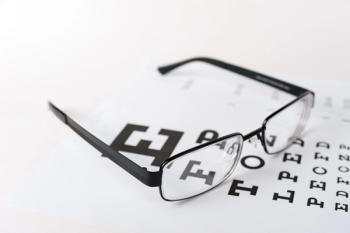
Biosimilars Now Look Like a Surer Thing After Initial Skepticism
The Inflation Reduction Act boosted the Medicare payment for biosimilars from the standard average sales price plus 6% to 8%.
It wasn’t that long ago that biosimilars were a very iffy proposition.
“I've been tracking biosimilars for at least a decade now, when they first had entered the market back in 2015,” said Tasmina Hydery, PharmD, MBA, associate director of digital solutions at AmerisourceBergen, at the 2023 Asembia Specialty Pharmacy Summit in Las Vegas.
“There were so many unknowns — whether prescribers would be comfortable prescribing them, whether patients were going to feel comfortable taking them, whether when their payers would even cover them and just in general, what uptake was going to be.”
Hydery and her fellow panelist, Cate Lockhart, Pharm.D., Ph.D., executive director of the Biologics and Biosimilars Collective Intelligence Consortium, reviewed the biosimilars market, and discussed the consequences of the Inflation Reduction Act. Hydery shared some insights from an AmerisourceBergen survey of 51 payers about biosimilars.
The FDA has approved 40 biosimilars and 29 of them are on the market. There are multiple biosimilars for many of the brand-name “reference” products, Hydery noted. “We see there’s actually more competition among the biosimilars themselves. It’s not just one-to-one with the reference product.”
This year marked the advent of biosimilars to Humira (adalimumab) and the first one, Amgen’s Amjevita, came on the market in January. Hydery said seven Humira biosimilars may be launched this year. Boehringer Ingelheim’s Cyltezo is the only one that has so-called interchangeability status, which means it can be substituted for Humira at the pharmacy level.
Hydery said the AmerisourceBergen survey showed that interchangeability was biggest factor in payer’s decisions about covering biosimilars. “When it comes to adoption, interchangeability was reported to be the game changer, even more so than being first to market or having specific device features like being latex-free,” she said.
Lockhart said the importance that payers place on interchangeability is worrying because it is a regulatory category that affects the ease with which pharmacists can dispense biosimilars instead of the reference product and is not intended to indicate that an interchangeable biosimilar is better than one that is not interchangeable.
To obtain interchangeability, in most cases manufacturers must conduct switching studies, which entail patients are switching back and forth between the biosimilar and the reference product several times to determine that switching is safe.
“It's a sort of a conundrum for us in the United States that we have this extra layer that mostly causes confusion, and it causes expense for the manufacturers. But this is a really important piece now in the U.S. marketplace,” Lockhart noted.
After Humira, Stelera (ustekinumab) is the next big fish in the biosimilar market. Hydery said it is expected to lose patent protection later this year and that biosimilar makers were various stages of clinical trials. Amgen’s Enbrel (etanercept) is another biologic that modulates the immune system that has billions of dollars in sale each year.But Hydery said patent litigation means Enbrel biosimilars can’t come on to the market till 2028 or 2029.
Hydery said biosimilars to Remicade (infliximab) have been on the market long enough to have some reliable information on how it and its biosimilars are comparing. She said Remicade sales dropped from $8.3 billion in 2021 to $6 billion in 2022. Meanwhile, sales for Inflectra, a Remicade biosimilar by Celltrion/Pfizer, doubled from $1.5 to $3 billion and sales of two other Remicade biosimilars, Avsola and Renflexis, also increased.
Effective Oct. 1 for five years, the Centers for Medicare & Medicaid Services will pay Average Sales Price plus 8%, rather than ASP plus 6%, for biosimilars whose average sales price does not exceed the price of the reference biological product.
To create an incentive for clinicians to prescribe biosimilars, the Inflation Reduction Act boosted the Medicare payment for biosimilars from the standard average sales price plus 6% to 8%. But Lockhart said another feature of the law, the Centers for Medicare and Medicaid Services negotiating Medicare drug prices and prioritizing biologics that do not have biosimilar competition for that price negotiation, could scare off the developers of biosimilars.
“This legislation really has a potentially direct impact on biosimilars,” said Lockhart. “It could be positive, where they're dictating some reimbursement levels for Medicare. But…this negotiation piece has some complexity. And so, we obviously don't know [the overall impact]. But I think there's a lot of speculation and everybody's watching this space very closely because of its impact on biosimilars specifically.”
Newsletter
Pharmacy practice is always changing. Stay ahead of the curve with the Drug Topics newsletter and get the latest drug information, industry trends, and patient care tips.





































































































































